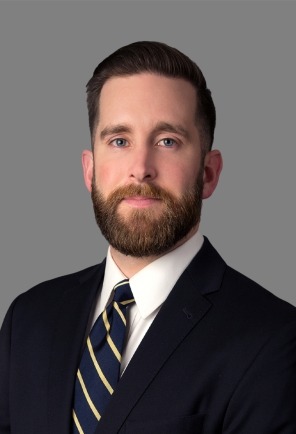Family Offices: Mitigating Risk and Safeguarding Wealth Part I
INTRODUCTION
“Family offices” — the firms responsible for overseeing the affairs and finances of the world’s wealthiest families — managed a collective $5.5 trillion in 2024, with that number expected to rise to $9.5 trillion by 2030.[1]
With cash, real estate, securities and other assets often spread across a complex web of trusts, partnerships and operating businesses, high-net-worth families face an increasing array of fraud risks posed by third parties and insiders. From embezzlement by insiders, to external fraud schemes perpetuated by investment and asset managers to cybersecurity threats, it is more important than ever for family offices to establish clear governance frameworks and internal controls to mitigate risk and safeguard wealth.
As detailed throughout this two-part series, common-sense, practical efforts to implement strong governance and fraud risk management can mitigate risks and position family offices to sustain and build their wealth over time.
This series is informed, in part, by our work to investigate, document and testify on a $45 million embezzlement scheme perpetuated by a longtime family office employee.
Read Part II of our series here.

| Download the Series >>> |
PART I: Governance
Clarity is at the heart of effective governance: clarity about roles, responsibilities and decision-making processes. A clear and well-crafted governance framework — if implemented effectively — can mitigate many forms of risk inherent to family offices, including those related to internal disputes, conflicts of interest and third parties.
But a static governance framework often proves insufficient for family offices dealing in multiple sectors, industries and geographies. Today, in an age where technological, regulatory and geopolitical landscapes change rapidly, family offices must periodically reassess their risk landscape and refine their governance framework — including policies, procedures and controls — to stay ahead of changing circumstances and ensure a balanced risk-management strategy.
Although nearly 85 percent of family offices report that they have established or are in the process of establishing clear processes and internal controls, only half have a governing board in place, and just over one third maintain a formal risk-management plan. [3] While internal controls represent a critical tool through which families can prevent and detect risks (as discussed further in Part II of our series), strong governance serves as the foundation upon which effective risk management is built.
Below, we define several best practices that family offices should consider with respect to governance, organization and risk management.
Family constitution and bylaws formalize the family’s shared values and vision and define guidelines for leadership and dispute resolution. A clear constitution provides a framework for strategic decision-making and sets the tone for ethical and transparent conduct. These documents can help avoid a common scenario in which family members hold differing interpretations of governing documents or disagree on the direction of a family enterprise — a situation which, if left unchecked, can lead to disputes that damage relationships and the family’s finances.
Defined roles and committees help establish oversight across core operating areas. For any such body (e.g., Treasury Committee, Investment Committee, Philanthropic Committee), the family office should define clear guidelines to ensure transparency and accountability with respect to activities that occur within the body’s purview. This structure promotes checks and balances across the organization, helping to ensure that decision-making occurs within defined guardrails.
Periodic risk assessments provide family offices with an updated accounting of the risks inherent to their operations while also evaluating the effectiveness of policies, procedures and controls at mitigating those risks. Such assessments should periodically evaluate tax obligations, legal requirements and regulatory changes relevant to the industries and jurisdictions in which the family operates. They should also evaluate the organization’s controls against fraud and asset-misappropriation risks, as described further in Part II of our series. Engaging an independent third party such as a forensic accountant or law firm to periodically conduct these assessments brings an objective view that helps evaluate the family office against industry best practices.
Agreed conflict-resolution channels define formal mediation and arbitration processes to address disputes that cannot be resolved internally. These processes, which should be memorialized within governance documents, support the timely resolution of internal conflicts that can otherwise inflame relationships and erode wealth through prolonged litigation.
Succession and leadership development, including financial-literacy programs and mentorship, create pathways for educating and empowering the next generation of family office leaders. In a recent JPMorgan study, nearly 70 percent of family offices counted succession planning among their top goals. [4] Thoughtful and proactive succession planning ensures that future leaders are well-prepared, which in turn reduces transitional risks associated with leadership changes.
Cybersecurity and data protection represent critical areas that require diligent training and awareness campaigns — particularly for family offices engaging in cross-border business. A 2024 Wharton study identified cybersecurity risk as a top concern among family office respondents,[5] and a similar study by JPMorgan found that nearly a quarter of family offices have been exposed to some form of cyber breach.[6] Family offices should define policies and procedures, train employees and family members on best practices and implement technological safeguards to protect data. In the short term, family offices should ensure that less technologically savvy family members understand how to recognize and report common scams such as phishing and social engineering, which are designed to infiltrate and extract sensitive information through trickery.
* * *
ABOUT THE AUTHORS
Paul Fitzsimmons is a Senior Director with A&M’s Disputes and Investigations practice in Washington, D.C., which conducts high-profile investigations around the world. He has appeared before the DOJ and FBI on complex fraud investigations involving family offices and investors and submitted analyses in those matters that courts used to quantify restitution payable to victims. He also regularly advises clients on risk management, including best practices on internal controls and fraud prevention. He is a Certified Public Accountant and licensed Private Investigator.
Alan Kirschenbaum is a Managing Director with Alvarez & Marsal Tax LLC, and head of A&M’s Private Client Services practice, which provides a full range of family office and tax services to high-net-worth families and individuals. Mr. Kirschenbaum has extensive experience assisting family offices with liquidity analysis and tax planning, investment analysis and multi-generational planning. Before joining A&M, Mr. Kirschenbaum served as CFO, Assistant Treasurer and Tax Director for Fortune 500 companies and worked with start-up organizations and privately owned businesses to establish financial governance, processes and controls. He is a Certified Public Accountant.
ABOUT ALVAREZ & MARSAL
Privately held since its founding in 1983, Alvarez & Marsal (A&M) is a leading global professional services firm that provides advisory, business performance improvement and turnaround management services. A&M’s Family Office Services practice routinely partners with family offices and high-net-worth families to conduct risk assessments, design and implement governance frameworks and streamline day-to-day financial and operational processes.
A recognized leader in investigations, corporate compliance and disputes, family offices, companies and their counsel engage A&M’s Disputes and Investigations practice in the wake of fraud crises to assess what went wrong and to help prevent it from happening again. Working closely with business stakeholders, we evaluate key processes and controls and then design and implement measured, risk-based solutions that mitigate risk without unduly burdening the business. When directed by our clients, we also prepare expert reporting and appear before regulators, prosecutors and courts to present facts in high-profile disputes and investigations.
[1] Deloitte Private, The Family Office Insights Series – Global Edition: Defining the Family Office Landscape, 2024, 5, https://www.deloitte.com/global/en/services/deloitte-private/research/defining-the-family-office-landscape.html
[2] “Family Offices: Mitigating Risk and Safeguarding Wealth Part II,” Alvarez & Marsal, June 17, 2025, https://www.alvarezandmarsal.com/thought-leadership/family-offices-mitigating-risk-and-safeguarding-wealth-part-ii
[3] Citi Private Bank, Global Family Office 2024 Survey Insights Report, 89, https://www.privatebank.citibank.com/doc/family-office/global-family-office-2024-survey-insights.pdf.coredownload.inline.pdf
[4] J.P. Morgan Private Bank, 2024 Global Family Office Report, 3. https://privatebank.jpmorgan.com/nam/en/services/wealth-planning-and-advice/family-office-services/2024-global-family-office-report
[5] Wharton Global Family Alliance, 2024 Executive Summary, Wharton Family Office Survey, University of Pennsylvania, 7, https://wgfa.wharton.upenn.edu/wp-content/uploads/2024/06/The-2024-Wharton-Family-Office-Survey-Executive-Summary.pdf
[6] J.P. Morgan Private Bank, 2024 Global Family Office Report, 3.


